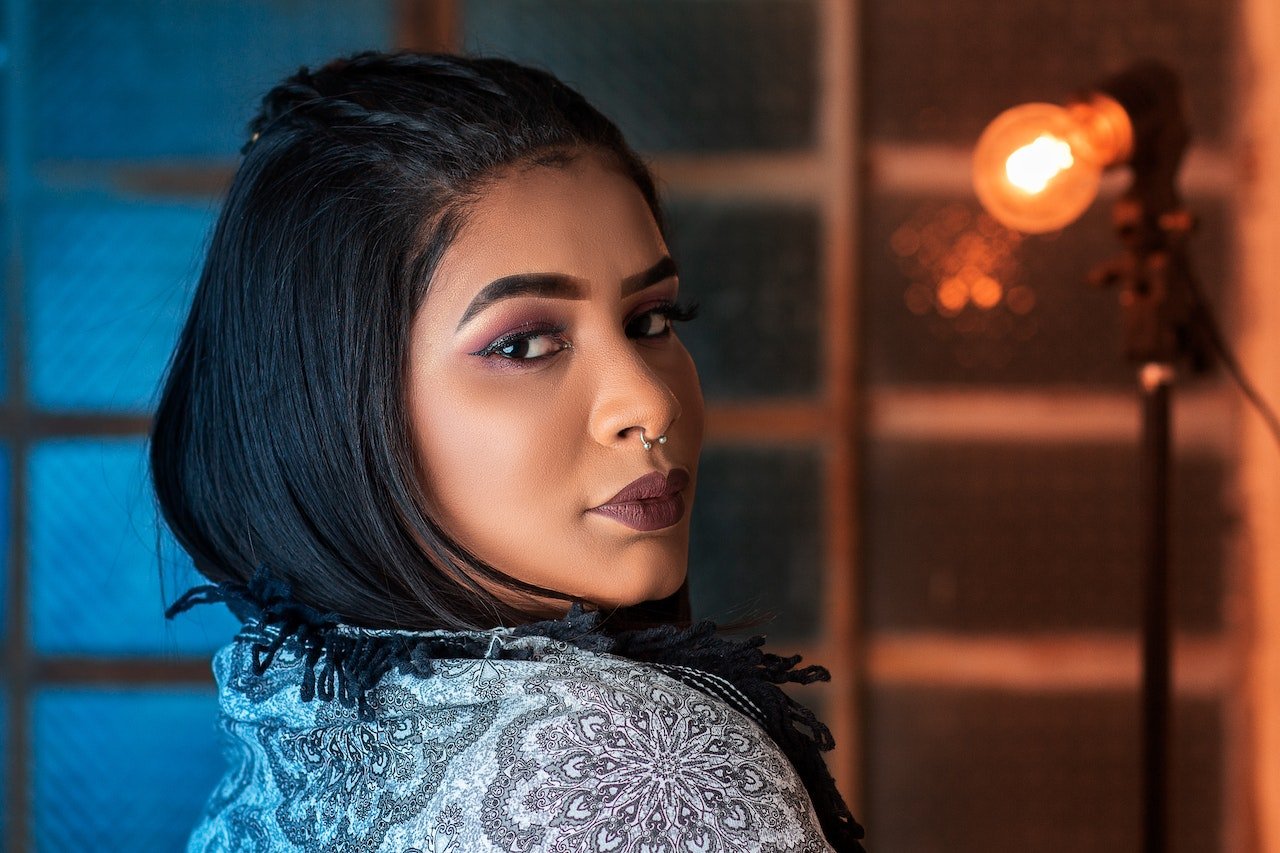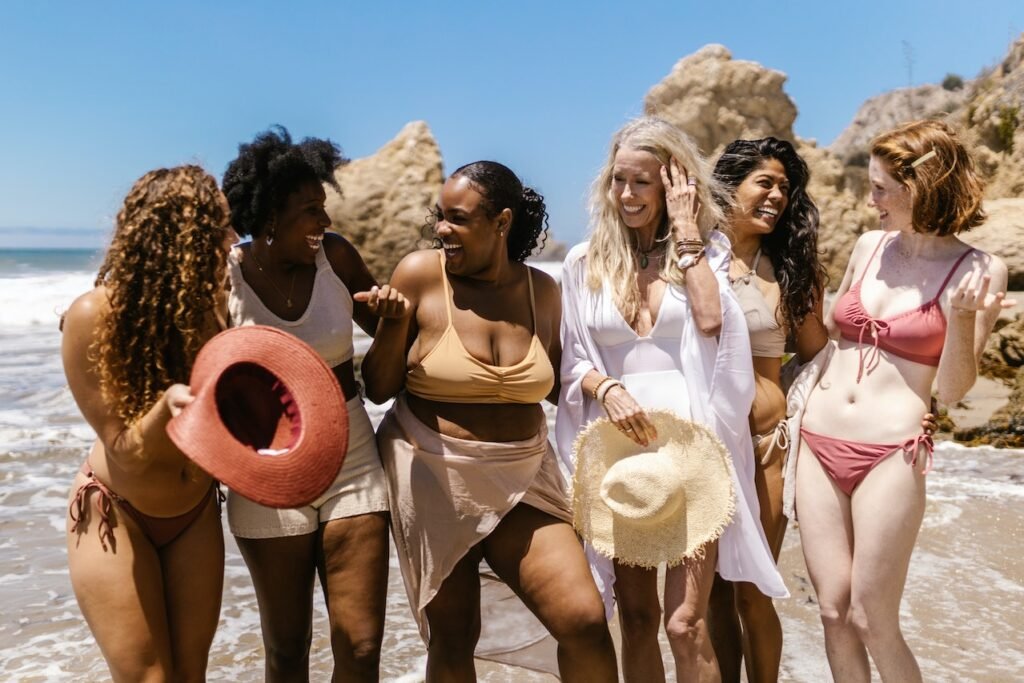With all the beauty brands out there, how are we still seeing a sizeable skincare equity gap in 2023? How is the beauty industry continuing to let down those of us with Black and Brown skin tones, melanin-rich skin? We are seeing changes, but so far, they seem small and disparate. Every makeup swatch or moisturizer that caters to melanin-rich skin is a step forward, but there’s a long journey ahead.
Think about how long it took to actually get a ‘nude‘ that was nude for you?
Introduction to the Beauty Industry’s Evolution
While there are many obvious examples of exclusion in the beauty industry, the historic biases here are merely a reflection. Beauty has always been an ever-evolving tapestry, reflecting society’s values and biases. In the Renaissance era, beauty standards in Europe were influenced by the then ‘upper’ class – pale skin, elaborate hairdos. Through time, as certain attributes were tagged as desirable, they resulted in disregard for diverse body types or features. In the 20th century, beauty standards became increasingly influenced by media and advertising. Mass media perpetuated narrow, often unhealthy or unattainable standards and the fashion industry pushed for thin, tall and predominantly white.
All of that manifested generally as disregard not just of the beauty of a diverse population but disregard for the consumers who made up that diverse population. For the longest time products for hair, face, body pretty much ignored the needs of melanin-rich individuals.
Even now, most of the sunscreens available can not be suitably used by melanin-rich skintones.
You would think the beauty industry would be rooted in celebrating human diversity—would be a leading front for inclusion. Beauty standards have been exclusionary, favouring specific attributes like fair skin, certain body types and Eurocentric features at the same time marginalising those who did not fit into these defined boxes.
Social and cultural movements in society in recent years have shown a marked shift that challenges traditional beauty norms. Elements of the civil rights and feminist movements connecting into more recent body positivity movements have been crucial in advocating for greater inclusivity in beauty and fashion. Brands once dominated by singular beauty ideals (grudgingly or willingly – we don’t really care either way) now open their arms to a broader spectrum. The recent shifts and advancements seen in beauty are again a reflection of changes being demanded in society for equity across multiple industries.
Why is Inclusivity Important in the Beauty Industry?
The cosmetics aisle shouldn’t be a one-lane road for only one type of traveller. It should be like those multi-lane highways in China or the US with a crazy number of exits for everyone. Why? Because beauty isn’t “one size fits all”. The rise of social media has helped to create a space for diverse voices, some of which have pushed the demand for change in this space. This, the growing push for body positivity and celebrating multiple expressions of beauty, has been essential in forcing a previously excluding industry to feature models of different ethnicities, races, sizes, ages and abilities.
VOUEE’s mission is a testament to this ethos, carving a niche for melanin-rich skin, and showing the industry how it’s done. The industry’s shift from a homogenized mentality isn’t just a nod to ethics but also an economic move. Continuing to ignore such a vast population of consumers is simply not good for long term business.
So why bother, really?
Impact: Beauty, in its true essence, goes far beyond skin. It’s about validation and identity. When your specific needs are catered for, whether that is a makeup shade or sunscreen that works for your skintone, clothes and shoes in your size, solutions for your hair type, you experience a sense of belonging that we should all be feeling.
Economic Wisdom: At the end of the day, companies are designed to be profitable. And so to continue to make products that specifically exclude a large proportion of people is plain silly.
The pressure of the community: Content creators, bloggers, influencers have been essential in showcasing diverse beauty from around the world.
And at the heart of it all? The undying human thirst for genuine representation. Not feigned for one press conference, but real, authentic representation. Don’t we all deserve that?
Diversity in the Beauty Industry – Statistics
Let’s talk numbers. In the last decade, brands targeting diverse skin tones have mushroomed. Yet, there’s a disconnect. If diverse consumers are powering a significant proportion of total beauty spending, why is their representation in the products, in the businesses, in the boardrooms, not proportional?
And, why does is experience of finding the right shade or the right product still so frustrating? It’s time for brands to not just recognize but actively embrace the changing face (body and hair too) of their consumer base.
Expanding Horizons: By 2024, the global beauty and personal care market will reach an estimated $716.6B. This growth is driven in large part by the demand for diverse products and brands.
Economic Impact: The U.S. ‘ethnic’ beauty market alone generated revenues of over $54 billion in 2019. This showcases the formidable financial potential of embracing inclusivity. So what are we waiting for?
A Preference for Diversity: About 70% of women today use skin and haircare products specifically made for their ‘ethnic’ group.
Inclusivity is a movement with deep societal and economic ramifications. Brands like VOUEE are doing more than just crafting products; we are weaving narratives and empowering a broad spectrum of individuals to advocate further.
The Path to More Equity
The beauty industry has been painting a picture for centuries, but historically, that canvas has been limited. Now, as voices rise and social media platforms amplify the calls for diversity, there’s an undeniable momentum. Brands, from indie to global giants, are sitting up and taking notice. The conversations on self-esteem and representation on platforms highlight the power of individual narratives.

Take a look at brands that have successfully woven inclusivity into their DNA. Their growth isn’t just about the bottom line but the resonating stories of individuals who finally see themselves reflected in beauty campaigns. And for those brands that are still hesitant, will eventually be outpaced by brands who see equity as an asset. The time to embrace a diverse consumer is now.
While global giants play catch-up, indie brands are already at the forefront, bringing fresh perspectives and championing inclusivity. Their agility allows them to pivot, innovate, and connect on a grassroots level. Our VOUEE skincare line, with its focus on melanin-rich skin, is just one of many small steps representing what the future of inclusive beauty should look like. Beauty, after all, isn’t about homogeny but celebrating the the differences that make humanity so vibrant.
Remaining Challenges and the Road Ahead
The journey is far from begun. For every brand that embraces diversity, there’s another using tokenism as a band-aid solution. It can’t just be about optics. It’s about genuinely understanding the pain points of consumers, from misrepresentation to outright exclusion. The dialogue must continue, not just in community forums and feedback sessions but within boardrooms.
The tapestry of beauty is rich, diverse, and constantly evolving. The onus is on brands to ensure that they’re not just part of the conversation but leading it. The future? A beauty industry where everyone sees themselves reflected, not just in mirrors but on shelves, campaigns, billboards and around boardrooms.
Continue the Conversation with Us!
We’re passionate about this dialogue and would love for you to join us. Let’s keep the conversation going on our socials VOUEE- IG. We value your insights and perspectives. It helps us formulate better.







One thought on “Beauty in Every Shade: Why Representation Matters”
[…] The call for inclusivity in beauty has led to more brands celebrating and catering to a wide range of skin tones. This positive trend is not just about expanding shade ranges in makeup but also about developing skin care products that address the specific needs of diverse skin types without compromising health or promoting unrealistic beauty standards. […]
You must be logged in to post a comment.